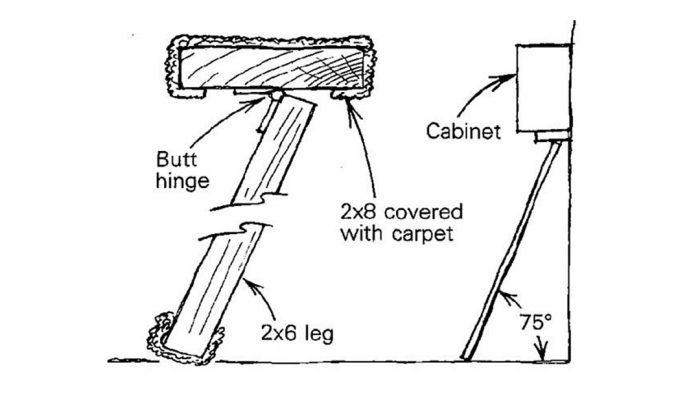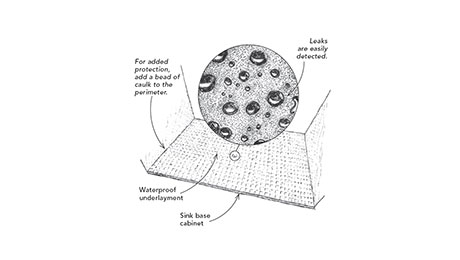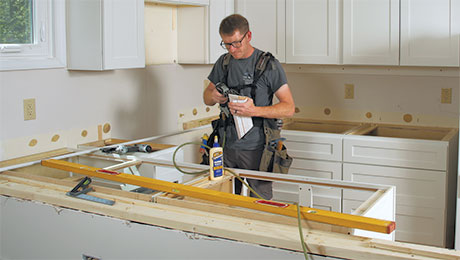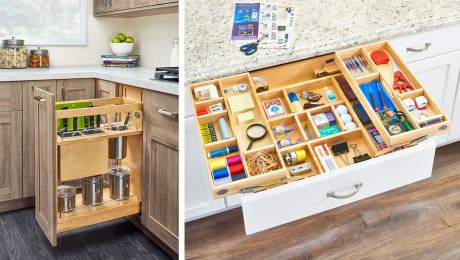
Whenever I hang upper cabinets by myself, I use a hinged cabinet jack like the one shown in the drawing. It consists of a 54-in. long 2×6 leg with a 20-in. long 2×8 block attached (to the top end) by way of a 4-inch butt hinge. Both the block and the base of the leg are covered with carpet to prevent scratches to wall and floor and to make it easier to scoot the bottom of the leg toward the wall.
To use the jack, I position the block a little lower than the eventual location of the cabinet bottom. Then 1 load the cabinet atop the block and tap the leg toward the wall to raise the cabinet into position. The butt hinge allows the block to maintain complete contact with the cabinet as the leg’s angle changes.
— Robert Francis, Napa, CA
Edited and Illustrated by Charles Miller
From Fine Homebuilding #69






























View Comments
May I suggest using this along with the usual method of fastening a support strap to the wall at the proper height. The support strap would ensure that all the cabinets are level and at the same height, while this cabinet jack would help hold them in place.
I'd also feel more comfortable using the jack with rubber affixed to the bottom of the leg.
I screw a 1/2" plywood ledger strip to the wall, aligning it with marks made with a laser level. After setting the cabinet on the ledger board, I use "kickers" to support the front of the cabinet. Once I get a screw in the top of the cabinet, I set the next cabinet up, move the kicker, then screw the face frames together using two hand screw clamps and trim head screws.